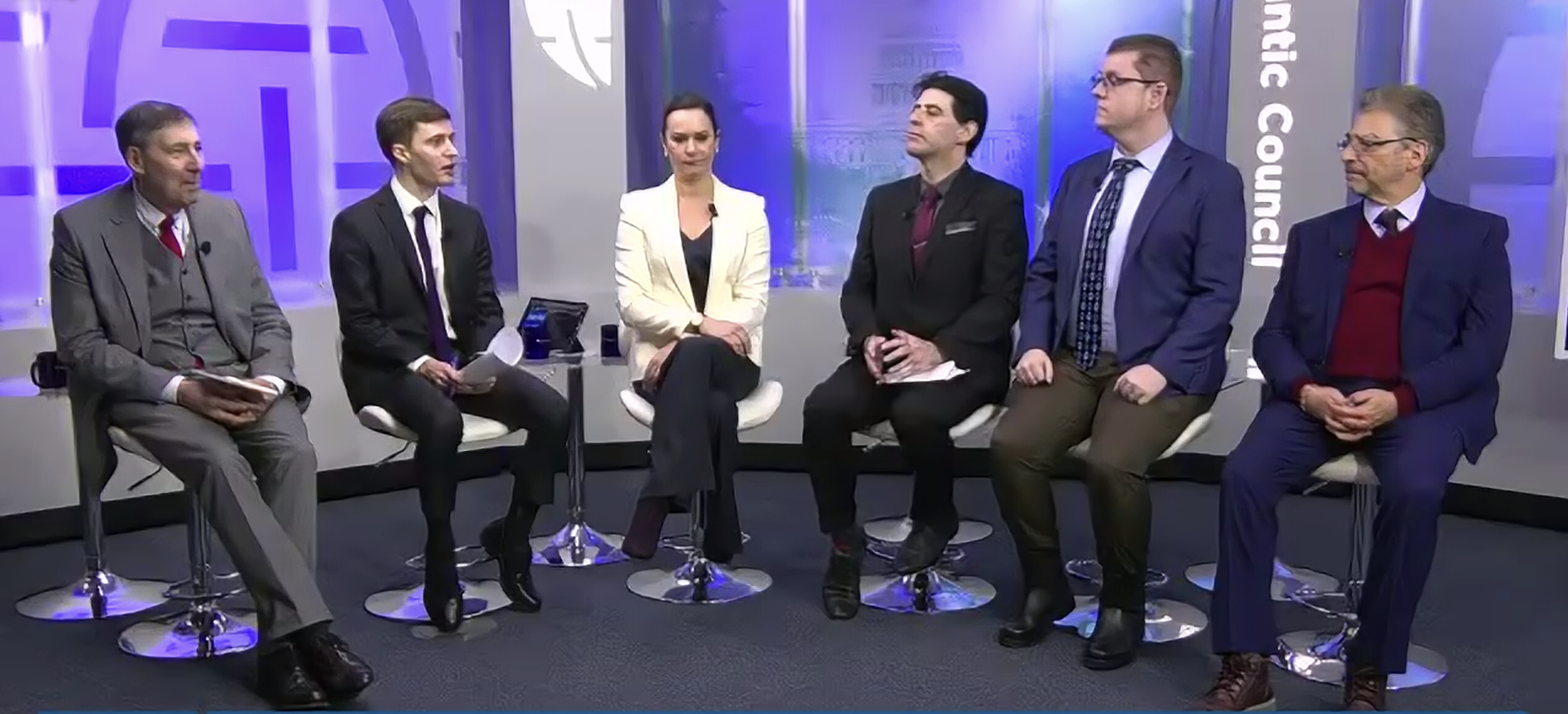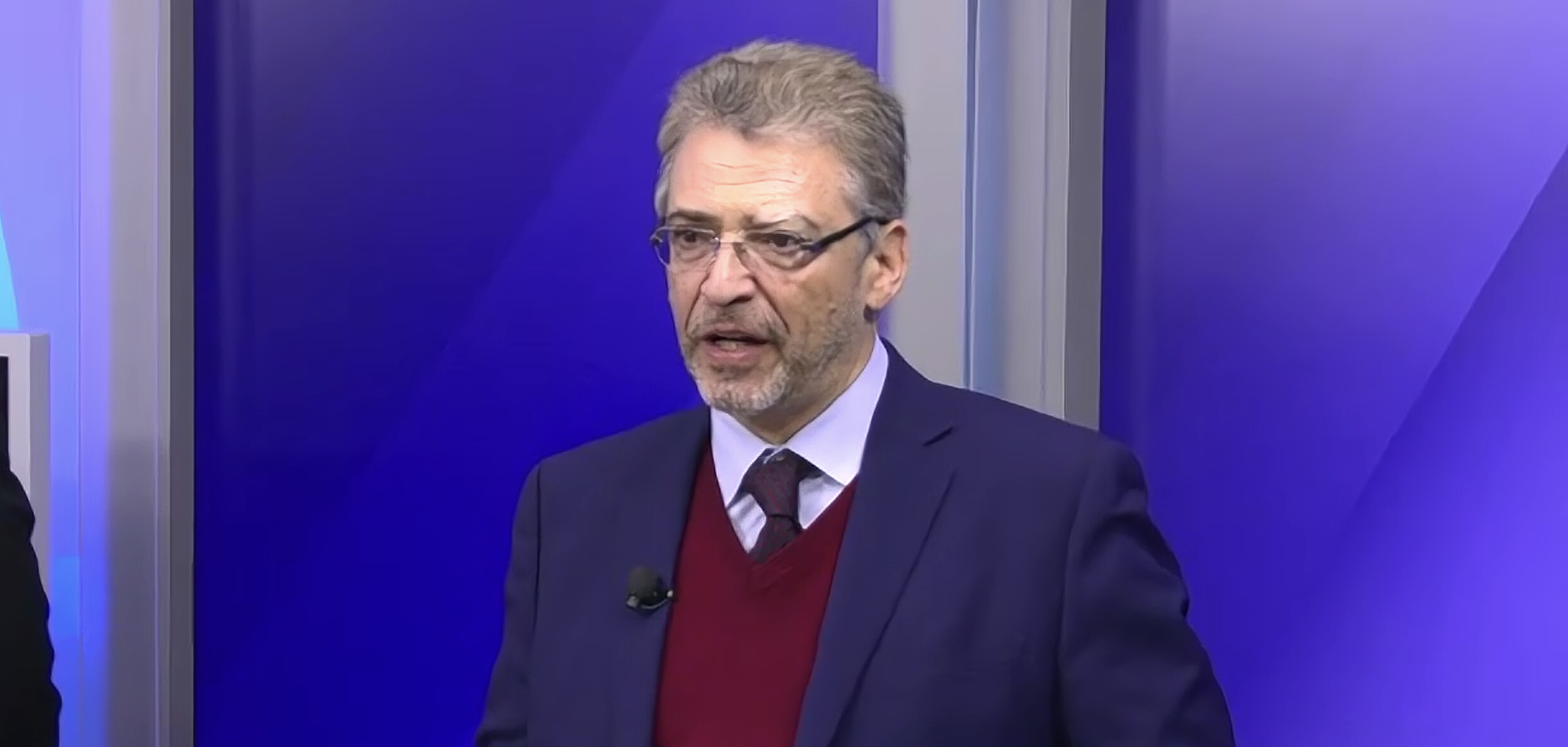ASTANA – The Atlantic Council’s Eurasia Center and the International Tax and Investment Center (ITIC) published a report on leveraging rare earth elements (REEs) in Central Asia to diversify global supply chains and regulate China’s rare earth dominance. As part of the Jan. 23 expert discussion, the Washington-based think tank reviewed the region’s potential and Kazakhstan’s position in mining and extractive industries.

John Herbst, Andrew D’Anieri, Suriya Evans-Pritchard Jayanti, Alejandro Sanchez, Wesley Hill, and Ariel Cohen. Photo credit: The Astana Times.
Moderated by Andrew D’Anieri, a resident fellow at the Atlantic Council, the panel session addressed a global demand for REEs amid a worldwide energy revolution. Climate change and great power competition have made countries more aware of their energy in vulnerability.
“Rare earths can be the engine of economic growth in Central Asia,” said Ariel Cohen, a senior fellow at the Atlantic Council and the managing director of the ITIC’s Energy, Growth and Security (EGS) Program.
“The energy sector is important because rare earths are the key elements of the transition toward renewables, the next generation of high tech, artificial intelligence (AI), quantum computing, or space travel,” said Cohen.
Along with his two co-authors of the report – ITIC EGS International Program Manager Wesley Hill and Alejandro Sanchez, the head of the Second Floor Strategies consulting firm, the experts shared their key findings.
Kazakhstan’s capacity-building in REEs
The research highlighted Kazakhstan’s strong mining history – the country possesses the largest REE reserves in the region, the largest chromium and the second-largest uranium reserves worldwide. Kazakhstan’s Kazatomprom national atomic company remains the world’s largest uranium producer.

Ariel Cohen. Photo credit: The Astana Times.
“While countries like Kazakhstan have dramatically improved their mining equipment and infrastructure since independence, other Central Asian countries have lagged behind,” reads the document. At the same time, it states that Kazakhstan’s economy is overly dependent on the extraction of oil, coal, and uranium, indicating the need to facilitate investments in REEs within the country’s course of economic diversification.
The experts underscored the effectiveness of Astana’s multivector foreign policy, which allowed the country to “secure partnerships with global powers, boost its presence in multinational organizations and institutions, and expand its worldwide recognition.”
Out of 30 critical elements, identified by the U.S. Geological Survey (USGS), 19 are now being produced in Kazakhstan, including natural graphite, phosphorite, tungsten, potassium salts, boron ores, helium, strontium, lithium, gallium, arsenic, germanium, feldspar, and bauxites. This was announced by the Chairman of the National Geological Service in Kazakhstan Yerlan Galiyev.
Since 2022, Kazakhstan has been carrying out prospecting works on 12 objects located in the Kazakh cities of Arkalyk, Temirtau, Khromtau, Zhezkazgan, Karatau, Balkhash and Ridder.
“Scientific research is also being conducted in Kazakhstan, particularly on the geodynamic and metallogenic analysis of southern Kazakhstan, which may have the biggest potential in rare earths,” said Galiyev.
Leveraging rare earths in Central Asia
The Atlantic Council and ITIC’s research also stresses the importance of critical minerals for Central Asia, which are not classified as rare earths. Both critical minerals and REEs are essential for developing cleaner energies. As the world races to slow down climate change, the demand will only grow.

The inaugural C5+1 presidential summit. Photo credit: Akorda.
The five Central Asian countries, according to Cohen, represent special importance geographically and logistically.
“Central Asia is the area where we are now seeking to develop transportation infrastructure. Russia and China are competing, but they are also competitors between themselves. This is the region where the West is increasing its involvement,” said Cohen.
As a case in point, he recalled the first-ever meeting of U.S. President Joe Biden with the Central Asian leaders in September last year in New York. During the summit, Biden proposed a C5+1 Critical Minerals Dialogue to harness the region’s abundant mineral resources and announced the establishment of a new business platform under the C5+1 framework.
There are two countries with the “most forward-looking progressive policies towards rare earths in Central Asia – Kazakhstan and Uzbekistan,” according to Sanchez.
“Kazakhstan already produces rare earth elements, eagerly looking for new partners to invest in rare earths mining and processing. For example, just last year the country signed 23 cooperation agreements at the Kazakh-German business forum, including the agreement to extract and process complex rare earths in eastern Kazakhstan. Uzbekistan, for example, has created the center for the study of rare earth metals,” said the international security analyst.
In 2019, supported by the South Korean research institutes, Uzbekistan’s Almalyk Mining and Metallurgical Combine (AMMC) created the only scientific and technological center in Central Asia to study rare earths. Based in Chirchiq, the former location of the refractory and heat-resistant metals plant, the center cooperates with the Korea Institute of Industrial Technology (KITECH) and the Korean Institute of Rare Metals (KIRAM).
Geopolitics in energy transformation
Hill paid special attention to geopolitics and international relations. China, according to the expert, controls approximately 80-90% of the international refining capacity of REEs.
“In the same way that we compete for energy resources, petroleum, most especially crude oil, we will be competing for rare earth elements in the 21st century. There is already this geopolitical clash we see all over the world for rare earth elements. It is primarily dominated and driven by a geopolitical competition between the United States and China,” said Hill.
The researcher mentioned China’s strategies, set back in 1994-1995, when Beijing identified rare earth refining as a “key geopolitical course that could advance not only the country’s economic portfolio but increase its political influence.”
“It was explicitly set out that involvement in rare earth elements is going to be vital to feed China’s industry. To date, the production of rare earths is almost wholly monopolized by China. Central Asia is very much at a crossroads. The region can expand its rare earth elements production without being fully dependent on China,” said Hill.
“Following the publication of the report, Beijing cut off all exports of rare earth element refining technologies to the United States and is heavily restricting its refining exports abroad,” he added.
Suriya Evans-Pritchard Jayanti, a nonresident senior fellow at the Atlantic Council, noted that rare earths represent a “geostrategic realignment opportunity for the Central Asian governments.”
“The countries are looking primarily for investments. It is a development opportunity, which has become extremely important, particularly after the Russian invasion of Ukraine, but also, of course, because of the energy transition. Lithium and other rare earth elements are necessary for this transition. So that is primarily an economic incentive,” said Jayanti.
Kazakhstan continues to navigate Eurasia’s changing geopolitics, opening new horizons for the region. China, the world’s second-largest economy, shares a border of 1,783 kilometers with Kazakhstan and bringing bilateral relations with Beijing to a new qualitative level is also a priority for its Central Asian neighbor.
“Central Asian countries want a closer relationship with the United States, which would be an important part of maintaining their hard-won independence. The increased U.S. engagement in Central Asia has one more reason – rare earths. I don’t think that Central Asian states are looking for a fight with either China or Russia. They are looking for a closer relationship with the United States,” said John Herbst, a senior director at the Atlantic Council’s Eurasia Center.
A week ago, in an interview with The Astana Times, Galiyev spoke about ample opportunities for the 15 rare earth deposits spread across three regions of Kazakhstan: Turkistan, Kostanai, and Mangystau.

